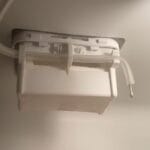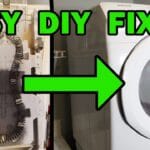Imagine this: it’s a sunny day, and you’re eager to dive into your backyard pool. But as you approach, you notice something’s off—the waterline is uneven.
An unlevel pool can be a real eyesore and even a safety concern. You might think draining the pool is your only option, but hold on! There are effective solutions to fix this problem without going through the hassle of draining it completely.
You’ll discover practical and straightforward methods to level your pool without losing all that precious water. These techniques not only save you time and effort but also protect your pool from potential damage caused by draining. Whether it’s a minor tilt or a noticeable slope, we’ll guide you through the steps to restore balance. Get ready to enjoy your pool again, just as it should be. Read on to learn how you can tackle this common issue with ease.
Assessing The Pool’s Current Condition
Evaluating the pool’s condition is crucial for fixing an unlevel pool without draining it. Identify uneven areas and check for structural issues to determine the best approach.
Assessing the pool’s current condition is a crucial step before attempting any repairs. It’s like diagnosing a car issue before heading to the mechanic. Understanding what’s wrong with your pool helps you decide on the best course of action without unnecessary hassle. Breaking it down into actionable steps ensures you don’t overlook critical details. Identifying Symptoms of an Unlevel Pool Have you noticed that one side of your pool looks lower than the other? This could be a telltale sign of an unlevel pool. Other symptoms include water spilling over one side more than the other or the pool cover not fitting properly. Sometimes, pool tiles may crack, or the pool’s lining might wrinkle on the lower side. If you spot any of these issues, it’s time to take a closer look. Ignoring these symptoms could lead to more significant problems down the line. Checking the Pool’s Water Level Start by inspecting the water level. Grab a tape measure and head to the pool’s edge. Measure the distance from the water surface to the deck at several points around the pool. You’ll want to make note of any discrepancies. If the water level is uneven, it confirms your pool is unlevel. You might be tempted to eyeball it, but precise measurements help in assessing the severity. This step ensures you’re not just guessing but are armed with facts. How did you feel the first time you realized your pool might be unlevel? It can be surprising to see how much the ground can shift. Taking these measurements helps you prepare for the next steps in leveling your pool without draining it. By understanding these symptoms and measurements, you’re better equipped to handle the situation. Are you ready to explore the solutions?

Credit: www.youtube.com
Tools And Materials Required
Fixing an unlevel pool without draining it might seem challenging. But with the right tools and materials, it’s entirely achievable. Proper equipment ensures stability and safety during the process. You’ll need some essential tools and materials for the task. Let’s explore what you need.
Essential Equipment For Pool Leveling
A carpenter’s level is crucial for checking the pool’s surface. You need a shovel for digging around the pool perimeter. Use a wheelbarrow to move earth or sand easily. An inflatable pool pillow can help support weak spots. A rubber mallet assists in adjusting pool walls gently. Don’t forget a strong rope to secure the pool’s frame.
Materials For Pool Support
Sand is a popular choice for leveling the pool base. Sandbags can provide temporary support where needed. Patio blocks offer a stable base under pool legs. Use a tarp to protect the pool’s bottom from sharp objects. Consider using foam padding for extra cushioning and support. These materials help keep the pool stable and level.
Adjusting Pool Supports
Adjusting pool supports is a practical way to fix an unlevel pool without draining it. It might sound like a daunting task, but with the right tools and a bit of patience, you can do it yourself. Imagine the satisfaction of knowing you saved time and money by tackling this issue head-on.
How do you know if your pool is unlevel? A visual inspection might reveal water sloshing unevenly, or perhaps you’ve noticed that your pool ladder seems tilted. These signs indicate it’s time to take action.
Using Sandbags For Stabilization
Sandbags can be a simple yet effective solution for stabilizing a pool. They’re easy to obtain and handle, making them accessible for most pool owners. Place sandbags strategically around the pool perimeter where you notice unevenness.
Why sandbags? They offer flexibility and can be adjusted as needed. You can add more bags or reposition them until you achieve the desired stability. Plus, they’re a temporary solution that won’t damage your pool structure.
Have you ever tried using sandbags for other DIY projects? If so, you already know how versatile they can be. Just ensure the bags are tightly packed to prevent shifting.
Installing Pool Leveling Pads
Pool leveling pads are another option to consider. They’re designed to provide a stable base and can be installed without major hassle. These pads come in various sizes, so you can pick what suits your pool best.
Why choose leveling pads? They offer a solid foundation and distribute weight evenly. This minimizes the risk of further imbalance. Plus, they’re durable and can withstand various weather conditions.
Think about it: A small investment in leveling pads can save you from costly repairs down the line. Isn’t that worth considering?
Have you ever experienced the frustration of an unlevel pool affecting your swimming enjoyment? Share your thoughts and tell us how these solutions might help you reclaim your pool paradise.

Credit: www.pinterest.com
Reinforcing Pool Structure
Fixing an unlevel pool can be done without draining it. Use a water level to identify uneven areas. Adjust the pool’s legs or supports to achieve balance.
Reinforcing the structure of your pool is a crucial step when tackling the issue of an unlevel pool without draining it. This approach not only ensures the pool remains stable but also extends its lifespan. Let’s dive into some practical methods to strengthen and secure your pool’s foundation and walls.
Strengthening Pool Walls
Keeping the pool walls strong and intact is essential for preventing further tilting. Begin by inspecting the walls for any cracks or weak spots. You can use a waterproof patching compound to seal cracks and reinforce the walls. This simple step can prevent water from seeping through, which could further destabilize the pool. Once patched, consider adding a layer of support by using braces or stakes around the pool’s perimeter. This technique can help maintain the wall’s integrity. You might be surprised at how a few strategically placed supports can make a world of difference. Have you thought about how these small changes could save you from costly repairs down the line?
Securing The Pool Base
The base of your pool is just as important as its walls when it comes to leveling issues. A firm base prevents the pool from settling unevenly over time. You can start by checking for any uneven ground or erosion around the base. Adding soil or a sand mix to fill low spots can create a more stable foundation. Another effective method is using a jack or lift system to slightly adjust and level the pool. This might sound complex, but it’s a straightforward way to achieve a balanced base. Have you ever considered how such tools could simplify your pool maintenance tasks? Finally, using a ground cloth or pad beneath your pool can provide an extra layer of protection. This simple addition can prevent any sharp objects from puncturing the pool base. Are you ready to take these steps to ensure your pool stands strong and level all season long?
Monitoring And Maintenance
Keeping a pool level is crucial for safety and functionality. Regular monitoring ensures your pool remains even and stable. Maintenance prevents future issues and prolongs pool life. Let’s dive into essential practices.
Regular Pool Level Checks
Check the pool level weekly. Use a spirit level tool for accuracy. Monitor water levels after storms or heavy rains. Adjust for any noticeable changes promptly. An early fix avoids larger problems. Make this part of your routine.
Preventive Measures For Future Issues
Install a pool cover to protect from debris and rain. Use sandbags around the pool edges for extra support. Inspect the pool area for any signs of erosion. Reinforce weak spots immediately. Regularly maintain pool equipment for consistent performance.

Credit: www.facebook.com
Frequently Asked Questions
How Can I Level My Pool Without Draining It?
You can level your pool without draining. Use a water level or laser level. Adjust the legs or supports.
What Tools Do I Need To Level My Pool?
Basic tools needed. Water level, shovel, and wooden boards. These help adjust and support the pool structure.
Can I Use Sand To Level My Pool?
Yes, you can use sand. Spread it evenly under the pool. This helps adjust minor level differences.
How Do I Check If My Pool Is Level?
Use a carpenter’s level or water level. Place it on the pool’s edge. Check all sides.
Is It Safe To Level A Pool Without Draining?
Yes, it’s safe if done carefully. Ensure even support. Avoid shifting too quickly.
Conclusion
Fixing an unlevel pool is simpler than you think. No draining needed. Just follow the steps to restore balance. Check the water level. Adjust the support legs. Use a leveling kit for better results. Regularly inspect the pool. A level pool ensures safe swimming.
Enjoy your summer without stress. Keep the pool in top shape all season long. Remember, patience is key. Small adjustments make a big difference. You can do it without expert help. Feel confident managing your pool. Dive into fun, not problems.




